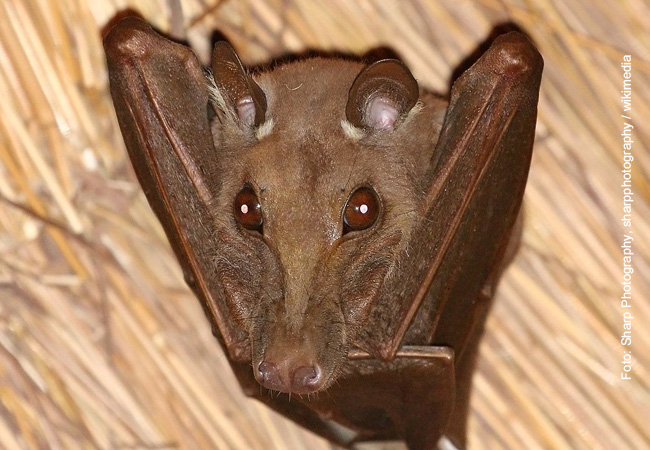
Zaire ebolavirus is among the deadliest of all known Ebola viruses for humans and is most likely transmitted by various species of bats. Models recently developed by scientists of the Senckenberg Nature Research Society and the Goethe University in Frankfurt show where these species may thrive in Africa. The results of the study, published in the journal “Scientific Reports”, suggest a wider range of distribution for the bat and fruit bat species than previously assumed. The researchers hope that the model will help to better evaluate and predict the occurrence of Ebola in the future and to implement preventive measures.
The Ebola virus is considered one of the world’s most dangerous pathogens. During the most severe outbreak to date in West Africa, over 11,000 deaths were documented between 2014 and 2016. Single cases are repeatedly reported from Europe as well, which are connected to previous travels to affected regions. An important source of infection are so-called reservoir hosts that carry the virus without being affected by it. For the various types of the Ebola virus, the most likely involve reservoir hosts are various species of bats and fruit bats.
For the first time, scientists investigated where nine of such bat and fruit bat species may encounter suitable habitats and climatic conditions in Africa. “Zaire ebolavirus is one of the most dangerous Ebola viruses. It kills up to 88 percent of those infected with it. To prevent or curb outbreaks of this virus, it is essential to know exactly where potential hotspots of infection may lurk,” explains parasitologist Prof. Dr. Sven Klimpel of the Goethe University in Frankfurt and the Senckenberg Biodiversity and Climate Research Centre.
Based on ecological niche modeling, his team was able to show that the respective bat and fruit bat species are able to thrive in West and East Africa, including large parts of Central Africa. A wide belt of potential habitats extends from Guinea, Sierra Leone, and Liberia in the west across the Central African Republic, the Republic of the Congo and the Democratic Republic of the Congo to Sudan and Uganda in the East. A few of the studied bats and fruit bats may even occur in the eastern part of South Africa.
In a second step, the researchers compared the potential habitats with range maps of the bat and fruit bat species that were generated by the International Union for the Conservation of Nature (IUCN) on the basis of observations of these animals. In addition, the team considered where a Zaire ebolavirus endemic has broken out in the past. The results were surprising: “The modelled habitats of the Zaire ebolavirus hosts are larger than their previously known ranges. It is possible that the bats and fruit bats have not yet been able to reach habitats beyond these ranges due to the presence of certain barriers,” says Klimpel.
“Another, more worrying explanation could be that science has hitherto underestimated the range of Ebola-transmitting bat and fruit bat species. In this case, the models would provide a more realistic picture,” explains Dr. Lisa Koch, the study’s lead author from Goethe University. Regions affected by Ebola outbreaks often suffer not only from health effects, but also from economic and social effects of the epidemic. The study’s findings suggest to keep a closer eye on diseases that occur in the modelled ranges of the reservoir hosts and to inform the public about potential Ebola infections, ultimately alleviating the consequences of an epidemic.
With regard to Europe, Klimpel states: “Ebola viruses, just like the SARS-CoV-2 (Coronavirus), are viruses from the animal kingdom that can be transmitted to humans. It can be expected that diseases of this type will occur more frequently in the future, since humans have increasing contact with wild animals, and globalization facilitates the spread of viruses around the world. In Europe, with its overall efficient health system, Ebola infections are certainly going to remain isolated incidents in the future. Nonetheless, in view of these trends it would be beneficial to intensively train and further educate physicians and nursing personnel in the treatment of tropical infectious diseases in our latitudes as well.”








